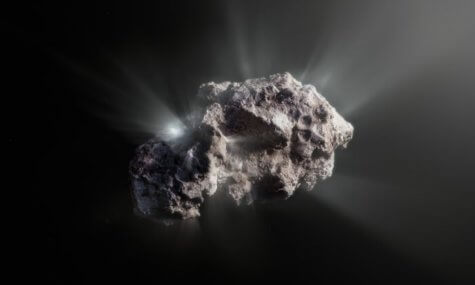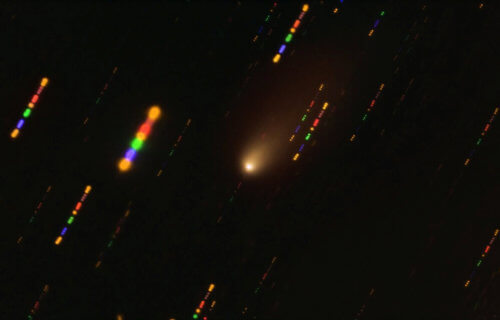ANTOFAGASTA, Chile — Some astronomers call comets nothing but “dirty snowballs” flying through space. Regardless of how they view comets, scientists are getting an especially “clean” look at one which is different than any they’ve seen before. An amazing new space telescope image has revealed the “most pristine” comet ever discovered.
The dazzling 2I/Borisov comet, discovered by an amateur astronomer in 2019, has never been tarnished with solar heat or radiation. European Southern Observatory’s Very Large Telescope (VLT) in Chile photographed the heavenly object, which measures around 10 miles wide. Researchers estimate its tail to be around 14 times the size of Earth.
Researchers believe the comet has been completely undisturbed by stars before flying by the Sun in 2019. Being the most intact comet on record, it is giving astronomers a rare chance to study its composition, which they believe is very similar to the cloud of gas and dust it originates from.
Astronomers also confirmed 2I/Borisov comes from outside of our own solar system two weeks after Gennady Borisov made the discovery. However, its chemical composition is so similar to other nearby objects it’s giving researchers a unique glimpse into the conditions in this solar system during prehistoric times.
“2I/Borisov could represent the first truly pristine comet ever observed,” Dr. Stefano Bagnulo of the Armagh Observatory and Planetarium in Northern Ireland says in a media release.
Distant visitor with a familiar background

ESO/M. Kormesser)
Dr. Bagnulo and his colleagues analyzed the comet with a spectrograph telescope. This technology can determine the internal composition of objects based on the light which reflects off of them. The team discovered 2I/Borisov definitely originates from deep space but is similar to Hale-Bopp; a comet from our solar system seen with the naked eye in the late 1990s. Hale-Bopp originated some 4.5 billion years ago, so the fact that they are so similar may indicate 2I/Borisov’s home is much like our own.
“The fact that the two comets are remarkably similar suggests that the environment in which 2I/Borisov originated is not so different in composition from the environment in the early Solar System,” adds Dr. Alberto Cellino from the National Institute for Astrophysics (INAF) in Italy.
Study authors are excited to learn more and hope an upcoming space mission will reveal more about the mysterious object.
“ESA is planning to launch Comet Interceptor in 2029, which will have the capability of reaching another visiting interstellar object, if one on a suitable trajectory is discovered,” Dr. Cellino says.
“The main result — that 2I/Borisov is not like any other comet except Hale–Bopp — is very strong,” Olivier Hainaut, an astronomer at ESO in Germany reports. “It is very plausible they formed in very similar conditions.”
“Imagine how lucky we were that a comet from a system light-years away simply took a trip to our doorstep by chance,” adds Dr. Bin Yang, an astronomer at ESO in Chile.
The sun can alter a comet’s makeup?
Dr. Yang and her team used data from the Atacama Large Millimeter/submillimeter Array (ALMA) to study 2I/Borisov’s dust grains to gather clues about the comet’s birth and conditions in its home system. The array is home to a massive battery of radio telescopes in the Chilean desert. Last year, astronomers captured stunning images of an eerie skull-shaped nebula just in time for Halloween from this site.
The team discovered that 2I/Borisov’s coma, an envelope of dust surrounding the comet’s body, contains compact pebbles and grains about one millimeter in size or larger. Scans also detected that the relative amounts of carbon monoxide and water in the comet changed drastically as it passed our Sun.
Researchers suggests the comet consists of various materials coming from different places in its planetary system. The observations by Yang’s team indicate that matter in 2I/Borisov’s home system mixed from near its star to further out. This may be because of the existence of giant planets, whose strong gravity stirs material in the system.
Astronomers believe that a similar process occurred early in the life of our own solar system.
The findings appear in the journal Nature Communications.
SWNS writer William Janes contributed to this report.
